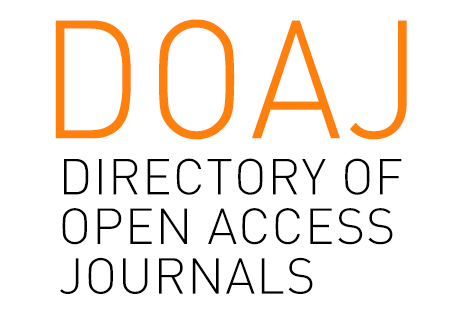Flexible laringotracheoscopy in de-cannulation of tracheostomized patients: safety improvements for the patient
DOI:
https://doi.org/10.17765/2176-9206.2019v12n2p377-383Keywords:
Decanulação, Doenças traqueais, Medidas de segurança, Obstrução de via aérea, Traqueostomia.Abstract
To evaluate de-cannulation by flexible laringeotracheoscopy for laringeotracheal lesions which are not diagnosed by clinical criteria. One hundred tracheostomized patients, aged between 18 and 80 years old, with indication of de-cannulation submitted to occlusion of the cannula during three minutes to evaluate fonation and ventilation, followed by tests. De-cannulation by clinical criteria was compared with diagnosis of larigeotracheal lesions after the end of flexible laringeotracheoscopy. Myer-Cotton criteria were employed, a referential for the classification of laringeotracheal diseases. Sixty-two (62%) patients had clinical criteria for de-cannulation but with laringeotracheal disease identified by flexible largineotracheoscopy. Eight (8%) could be de-cannulated, based on clinical criteria which counterindicated the removal of the cannula. Only twenty-six (26%) did not present a laringeotracheal disease. Eleven (11%) were not de-cannulated since they did not comply with clinical and endoscopy criteria. Flexible laringeotracheoscopy acknowledged the laringeotracheal disease in patients who complied with clinical criteria for the removal of tracheal cannula. The test, as a routine in patients´ evaluation complying with de-cannulation criteria, was useful and safe.Downloads
References
Pham T, Brochard LJ, Slutsky AS. Mechanical Ventilation: State of the art. Mayo Clin Proc. 2017; 92(9):1382-1400.
Schroder JB, Marian T, Muhle P, Claus I, Thomas C, Ruck T, et al. Intubation, tracheostomy, and decannulation in patients with Guillain-Barré-syndrome-does dysphagia matter? Muscle Nerve. 2019; 59(2):194-200.
Singh RK, Saran S, Baronia AK. The practice of tracheostomy decannulation – A systematic review. J Intensive Care. 2017; 5: 38.
Enrichi C, Battel L, Zanetti C, Koch I, Ventura L, Palmer K, et al. Clinical criteria for tracheostomy decannulation in subjects with acquired brain injury. Respir Care. 2017; 62(10):1255-1263.
Higashi T, Eguchi H, Wakayama Y, Sumi M, Saito T, Inaba Y. Analysis of the risk factors for tracheostomy and decannulation after traumatic cervical spinal cord injury in an aging population. Spinal Cord. 2019; 10. doi: 10.1038/s41393-019-0289-x.
Cotton, R T. Pediatric laryngotracheal stenosis. J Pediatr Surg. 1984; 1 9(6):699-704.
Southcott AM, Holdsworth C, Malcolm L, Muruganandan S, Skinner E. Evaluation of the implementation of a Tracheostomy Review Services (TRS): an observational cohort study. J Interprof Care. 2019; 23:1 - 9.
Budweiser S, Baur T, Jorres RA, Kollert F, Pfeifer M, Heinemann F. Predictors of successful decannulation using tracheostomy retainer in patients with prolonged weaning and persisting respiratory failure. Respiration. 2012; 84:469–476.
Mah JW, Staff II, Fisher SR, Butler KL. Improving decannulation and dwallowing function: A comprehensive, multidisciplinary approach to post-tracheostomy care. Respir Care. 2017; 62(2):137-143.
Nakarada-Kordic I, Patterson N, Wrapson J, Reay SD. A Systematic Review of Patient and Caregiver Experiences with a Tracheostomy. Patient. 2018; 11(2):175-191.
Rodrigues LB; Nunes TA. Importância da broncoscopia flexível na decanulação de pacientes traqueostomizados. Rev. Col. Bras. Cir. 2015; 42(2): 075-080.
Sachdev A, Ghimiri A, Gupta N, Gupta D. Pre - decannulation flexible bronchoscopy in tracheostomized children. Pediatr Surg Int. 2017; 33(11):1195-1200.
Cohen O, Tzelnick S, Lahav Y, Stavi D, Shoffel-Havakuk H, Hain M, et al. Feasibility of a single-stage tracheostomy decannulation protocol with endoscopy in adult patients. Laryngoscope. 2016; 126(9):2057-62.
Grillo HC. Surgery of the trachea and bronchi. Hamilton: BC Decker; 2004.
Welton C, Morrison M, Catalig M, Chris J , Pataki J, Can an interprofessional tracheostomy team improve weaning to decannulation times? A quality improvement evaluation. Can J Respir Ther. 2016; Winter; 52(1): 7–11.
Kutsukutsa J, Mashamba -Thompson TP, Saman Y. Tracheostomy decannulation methods and procedures in adults: A systematic scoping review protocol. Syst Rev. 2017; 4; 6 (1):239.
Santus P, Gramegna A, Radovanovic D, Racanelli R, Valenti V, Rabbiosi D, et al. A systematic review on tracheostomy decannulation: A proposal of a quantitative semiquantitative clinical score. Med. 2014; 15; 14:201.
Brunet J, Dufour-Trivini M, Sauneuf B, Terzi N. Gestion de la décanulation: quelle prise en charge pour le patient trachéotomisé ? Management of decanulation in the tracheostomized patient. Réanimation, 2015.
Otorhinolaryngol. Tracheal decannulation protocol in patients affected by traumatic brain injury. In: Arch Otorhinolaryngol. 2014; 18(2):108-14.
Seligman KL, Liming BJ, Smith RJH. Pediatric Tracheostomy Decannulation: 11-Year Experience. Otolaryngol Head Neck Surg. 2019; Apr 16:194599819842164. doi: 10.1177/0194599819842164.
Downloads
Published
How to Cite
Issue
Section
License
A submissão de originais para a revista Saúde e Pesquisa implica na transferência da Carta Concessão de Direitos Autorais, pelos autores, dos direitos de publicação digital para a revista após serem informados do aceite de publicação.A Secretaria Editorial irá fornecer da um modelo de Carta de Concessão de Direitos Autorais, indicando o cumprimento integral de princípios éticos e legislação específica. Os direitos autorais dos artigos publicados nesta revista são de direito do autor, com direitos da revista sobre a primeira publicação. Os autores somente poderão utilizar os mesmos resultados em outras publicações, indicando claramente a revista Saúde e Pesquisa como o meio da publicação original. Em virtude de tratar-se de um periódico de acesso aberto, é permitido o uso gratuito dos artigos, principalmente em aplicações educacionais e científicas, desde que citada a fonte. A Saúde e Pesquisa adota a licença Creative Commons Attribution 4.0 International.
A revista se reserva o direito de efetuar, nos originais, alterações de ordem normativa, ortográfica e gramatical, com vistas a manter o padrão culto da língua e a credibilidade do veículo. Respeitará, no entanto, o estilo de escrever dos autores. Alterações, correções ou sugestões de ordem conceitual serão encaminhadas aos autores, quando necessário. Nesses casos, os artigos, depois de adequados, deverão ser submetidos a nova apreciação. As opiniões emitidas pelos autores dos artigos são de sua exclusiva responsabilidade.

















